Related Research Articles

Ken Elton Kesey was an American novelist, essayist and countercultural figure. He considered himself a link between the Beat Generation of the 1950s and the hippies of the 1960s.

The European robin, known simply as the robin or robin redbreast in Great Britain and Ireland, is a small insectivorous passerine bird that belongs to the chat subfamily of the Old World flycatcher family. It is found across Europe, east to Western Siberia and south to North Africa; it is sedentary in most of its range except the far north.
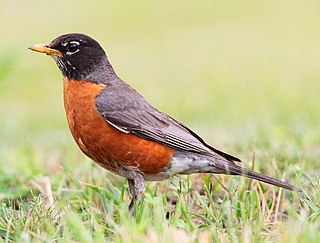
The American robin is a migratory bird of the true thrush genus and Turdidae, the wider thrush family. It is named after the European robin because of its reddish-orange breast, though the two species are not closely related, with the European robin belonging to the Old World flycatcher family. The American robin is widely distributed throughout North America, wintering from southern Canada to central Mexico and along the Pacific Coast. It is the state bird of Connecticut, Michigan, and Wisconsin.

The peregrine falcon, also known as the peregrine, and historically as the duck hawk in North America, is a cosmopolitan bird of prey (raptor) in the family Falconidae. A large, crow-sized falcon, it has a blue-grey back, barred white underparts, and a black head. The peregrine is renowned for its speed, reaching over 320 km/h (200 mph) during its characteristic hunting stoop, making it the fastest bird in the world, as well as the fastest member of the animal kingdom. According to a National Geographic TV program, the highest measured speed of a peregrine falcon is 389 km/h (242 mph). As is typical for bird-eating raptors, peregrine falcons are sexually dimorphic, with females being considerably larger than males.
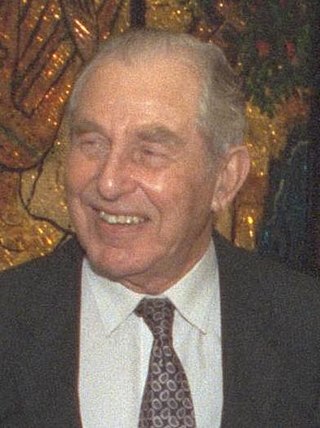
Major-General Chaim Herzog was an Irish-born Israeli politician, general, lawyer and author who served as the sixth President of Israel between 1983 and 1993. Born in Belfast and raised primarily in Dublin, the son of Ireland's Chief Rabbi Yitzhak HaLevi Herzog, he immigrated to Mandatory Palestine in 1935 and served in the Haganah Jewish paramilitary group during the 1936–1939 Arab revolt. He returned to Palestine after the war and, following the end of the British Mandate and Israel's Declaration of Independence in 1948, fought in the Battles of Latrun during the 1948 Arab–Israeli War. He retired from the Israel Defence Forces in 1962 with the rank of major-general.

The flame robin is a small passerine bird native to Australia. It is a moderately common resident of the coolest parts of south-eastern Australia, including Tasmania. Like the other two red-breasted Petroica robins—the scarlet robin and the red-capped robin—it is often simply called the robin redbreast. Like many brightly coloured robins of the Petroicidae, it is sexually dimorphic. Measuring 12–14 cm (4.7–5.5 in) long, the flame robin has dark brown eyes and a small thin black bill. The male has a brilliant orange-red chest and throat, and a white patch on the forehead above the bill. Its upper parts are iron-grey with white bars, and its tail black with white tips. Female coloration is a muted grey-brown. Its song has been described as the most musical of its genus.
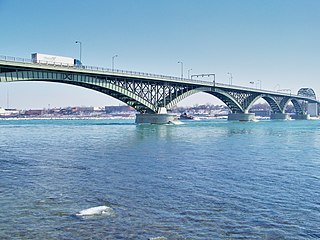
The Peace Bridge is an international bridge between Canada and the United States at the east end of Lake Erie at the source of the Niagara River, about 20 kilometres (12.4 mi) upriver of Niagara Falls. It connects Buffalo, New York, in the United States to Fort Erie, Ontario, in Canada. It is operated and maintained by the binational Buffalo and Fort Erie Public Bridge Authority.

The Toronto Phantoms were a professional arena football team based in Toronto, Ontario. The team was a member of the Eastern Division of the National Conference of the Arena Football League (AFL). The team also previously operated in New York City and Hartford, Connecticut.
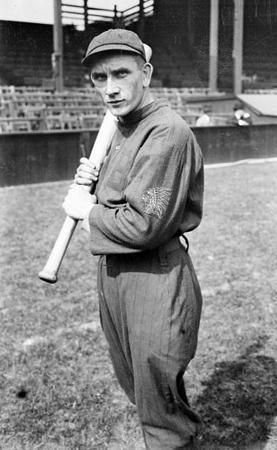
Walter James Vincent "Rabbit" Maranville was an American professional baseball shortstop, second baseman and manager. He played in Major League Baseball (MLB) for the Boston Braves, Pittsburgh Pirates, Chicago Cubs, Brooklyn Robins, and St. Louis Cardinals between 1912 and 1934. At the time of his retirement in 1935, he had played in a record 23 seasons in the National League, a mark which was not broken until 1986 by Pete Rose.

The black robin or Chatham Island robin is an endangered bird from the Chatham Islands off the east coast of New Zealand. It is closely related to the South Island robin. It was first described by Walter Buller in 1872. The binomial commemorates the New Zealand botanist Henry H. Travers (1844–1928). Unlike its mainland counterparts, its flight capacity is somewhat reduced. Evolution in the absence of mammalian predators made it vulnerable to introduced species, such as cats and rats, and it became extinct on the main island of the Chatham group before 1871, being restricted to Little Mangere Island thereafter.

Robert Emmet Sherwood was an American playwright and screenwriter.
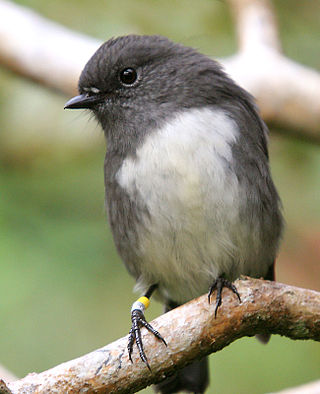
The South Island robin, also known in Māori as the Kakaruwai., is a sparrow-sized bird found only in New Zealand, where it has the status of a protected endemic species. The birds are sparsely distributed through the South Island and Stewart Island/Rakiura, although the distribution is not continuous. The nominate, and the Stewart Island robin are the two subspecies. The species is closely related to the North Island robin, and also to the extremely rare black robin of the Chatham Islands.

Interstate 190 is a north–south auxiliary Interstate Highway in the United States that connects I-90 in Buffalo, New York, with the Canadian border at Lewiston, New York, near Niagara Falls. Officially, I-190 from I-90 north to New York State Route 384 (NY 384) is named the Niagara Thruway and is part of the New York State Thruway system. The remainder, from NY 384 to Lewiston, is known as the Niagara Expressway and is maintained by the New York State Department of Transportation (NYSDOT).
The Thousand Islands Parkway (often written as 1000 Islands Parkway) is a scenic parkway in the Canadian province of Ontario. It extends easterly from an interchange with Highway 401 in Gananoque for approximately 40 kilometres (25 mi) to rejoin Highway 401 near the community of Butternut Bay, west of Brockville. The parkway follows the north shore of the St. Lawrence River, and was formerly designated Highway 2S (S for Scenic) until 1970. It passes through the communities of Gray's Beach, Halsteads Bay, Ivy Lea, Darlingside, Rockport, Narrows, La Rue Mills and Mallorytown Landing, as well as providing access to the three inland properties of the Thousand Islands National Park. Highway 137, which meets the parkway near its midpoint, provides access to the Interstate 81 in New York via the Thousand Islands Bridge.
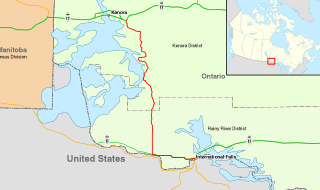
King's Highway 71, commonly referred to as Highway 71, is a provincially maintained highway in the Canadian province of Ontario. The 194-kilometre-long (121 mi) route begins at the Fort Frances–International Falls International Bridge in Fort Frances, continuing from US Highway 53 (US 53) and US 71 in Minnesota, and travels west concurrently with Highway 11 for 40 kilometres (25 mi) to Chapple. At that point, Highway 11 continues west while Highway 71 branches north and travels 154 kilometres (96 mi) to a junction with Highway 17 just east of Kenora. Highway 71 forms a branch of the Trans-Canada Highway for its entire length, with the exception of the extremely short segment south of Highway 11 in Fort Frances.

Conversation Peace is the 22nd album released by American musician Stevie Wonder, on the Motown label in 1995. The album was Wonder's first full-length non-soundtrack studio album since 1987's Characters. This album yielded the hits "For Your Love" and the reggae-flavored "Tomorrow Robins Will Sing". This album also saw Wonder reuniting with Robert Margouleff, who assisted during Wonder's "classic period" from 1972 to 1974.
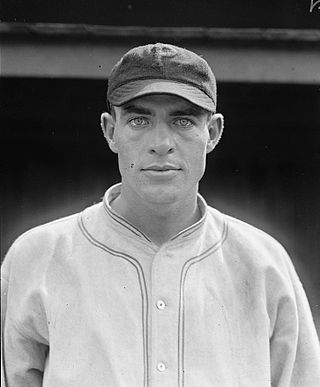
Forest Glenn Wright was an American professional baseball shortstop. He played in Major League Baseball from 1924 through 1935 for the Pittsburgh Pirates, Brooklyn Robins / Dodgers, and Chicago White Sox.
King's Highway 41, commonly referred to as Highway 41, is a provincially maintained highway in the Canadian province of Ontario. The 159.6-kilometre (99.2 mi) highway travels in a predominantly north–south direction across eastern Ontario, from Highway 7 in Kaladar to Highway 148 in Pembroke. The majority of this distance crosses through a rugged forested region known as Mazinaw Country. However, the route enters the agricultural Ottawa Valley near Dacre. A significant portion of Highway 41 follows the historic Addington Colonization Road, built in 1854.
King's Highway 38, commonly referred to as Highway 38, was a provincially maintained highway in the Canadian province of Ontario. The 66.9-kilometre (41.6 mi) road connected Highway 2 and Highway 401 in Kingston with Highway 7 west of Perth. It was designated in 1934 and remained relatively unchanged throughout its existence, aside from some minor diversions and a rerouting through Kingston as a result of the construction of Highway 401 in the mid-1950s. At the beginning of 1998, the entire highway was transferred to the municipalities of Frontenac County through which it travelled: Kingston, South Frontenac and Central Frontenac. Today the former highway is named Road 38 and Gardiners Road, but is still referred to as Highway 38 by locals.
References
- "Robin Eggs on Peace Bridge", The New York Times. April 25, 1935.
- The Canadian Press. "Famous robins return to nest at Peace Bridge", The New York Times. April 12, 1936. Page 6.